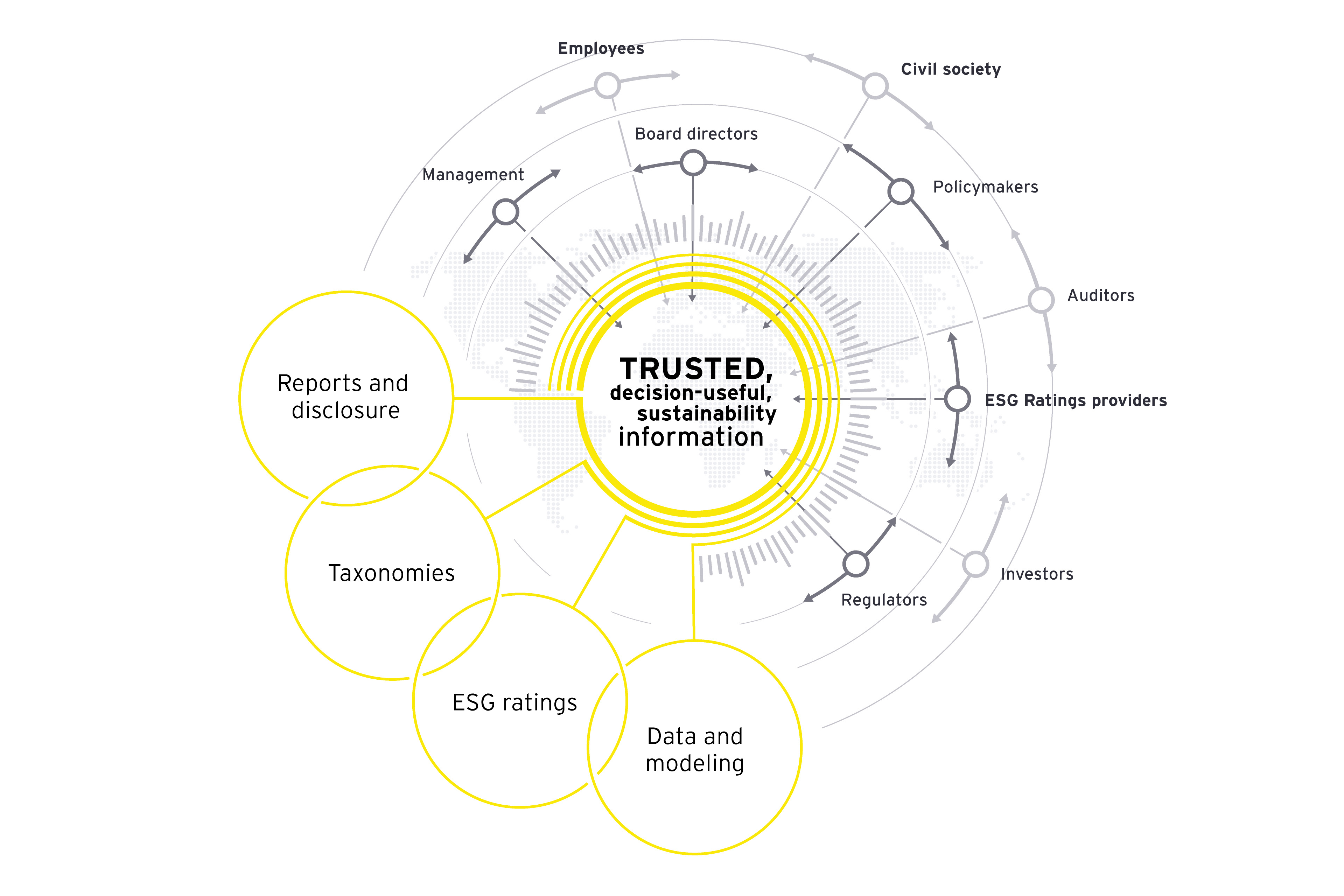The environmental, social and governance (ESG) movement is at a make-or-break moment. Investor interest has grown to historically high levels, partly thanks to the expectations of a new generation of investors (millennials and Generation Z).
Yet ESG as a topic remains in flux, with a wide range of perspectives on not only the appropriate definition of ESG, but – more critically – information that will best inform capital allocation. This information includes ESG reporting and disclosures, taxonomies, ESG ratings, and underlying science, data, and modeling capabilities.
There are many actors that make up what we define as the “sustainability information ecosystem”: from investors, board directors, management, employees and civil society members to ratings providers, auditors, regulators and policymakers. Currently, there is little agreement within this group on what ESG includes, how to apply agreed metrics and how best to use available data.
There is wide support for a global standard on sustainability reporting and in making a stronger connection between the “F” of financials and ESG – “FESG”. The overwhelming majority of investors (89%) surveyed for the most recent EY Global Institutional Investor Survey said they would like the reporting of ESG performance, measured against a set of globally consistent standards, to become a mandatory requirement.
Furthermore, differing legal systems, as well as varying social and political contexts, influence the principles that determine standards and regulations governing sustainability information. Not surprisingly, different jurisdictions are moving at different speeds and in different ways to develop and implement ESG reporting rules.
In this article, we highlight five areas of focus that, when addressed across the sustainability information ecosystem, can help in the move toward ESG information reporting that is decision-useful and trusted.
Defining the emerging sustainability information ecosystem
While there are increasing connections between the financial and the sustainability information ecosystems, there are additional voices in the sustainability information ecosystem, including but not limited to largely unregulated ESG ratings and data providers, civil society, including activist investors, and employees.
The sustainability information ecosystem intends to serve two primary investor groups:
- Those focused on financial risk – that is, those who seek material information related to the financial impact on a company of sustainability-related factors
- Those focused on social impact – that is, those who seek information about the company’s impact on its external surroundings (including on people, communities, the environment, and society)



